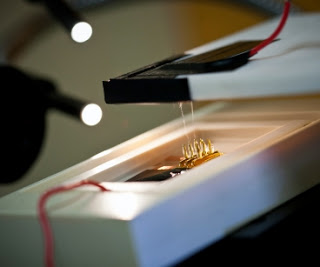

| Visitors Now: | |
| Total Visits: | |
| Total Stories: |

| Story Views | |
| Now: | |
| Last Hour: | |
| Last 24 Hours: | |
| Total: | |
MIT boosting nanospinner yields by ten times, lower costs and increasing energy efficiency
From
Nanofibers — strands of material only a couple hundred nanometers in diameter — have a huge range of possible applications: scaffolds for bioengineered organs, ultrafine air and water filters, and lightweight Kevlar body armor, to name just a few. But so far, the expense of producing them has consigned them to a few high-end, niche applications.
MIT has a new system for spinning nanofibers that should offer significant productivity increases while drastically reducing power consumption.
Using manufacturing techniques common in the microchip industry, the MTL researchers built a one-square-centimeter array of conical tips, which they immersed in a fluid containing a dissolved plastic. They then applied a voltage to the array, producing an electrostatic field that is strongest at the tips of the cones. In a technique known as electrospinning, the cones eject the dissolved plastic as a stream that solidifies into a fiber only 220 nanometers across.
In their experiments, the researchers used a five-by-five array of cones, which already yields a sevenfold increase in productivity per square centimeter over even the best existing methods. But, Velásquez-García says, it should be relatively simple to pack more cones onto a chip, boosting productivity even more. Indeed, he says, in prior work on a similar technique called electrospray, his lab was able to cram almost a thousand emitters into a single square centimeter. And multiple arrays could be combined in a panel to further increase yields.
They believe that they can increase yields by ten times over what is available now.
See more and subscribe to NextBigFuture at 2012-11-21 15:42:32 Source: http://nextbigfuture.com/2012/11/mit-boosting-nanospinner-yields-by-ten.html
Source:



